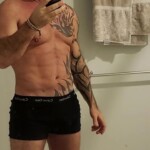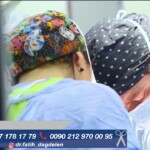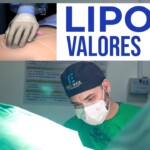http://www.rhinoplastyspecialist.com, 310.275.2467
This is my plastic surgery before and after story as I have a closed (endonasal) rhinoplasty in Beverly Hills, CA. My sister had a rhinoplasty procedure before me that left her with undesirable results. Learning from her experience, I did my research and chose one of the Top Rhinoplasty Specialists in the world, Rhinoplasty Specialist Dr. Paul S. Nassif, to perform my surgery.
Closed rhinoplasty refers to procedures in which the incisions are confined to the inside of the nose. Open rhinoplasty refers to procedures in which an additional small incision is made between the nostrils on the underside of the nose. Closed rhinoplasty results in no visible scarring while open rhinoplasty results in a well-concealed, fine-line scar.
As a patient, you wonder why this is happening to me. You wonder why do I need a revision rhinoplasty 9 months following my initial nose surgery. You wonder why everything looked great and the next thing you notice is pinched nostrils and progressive nasal obstruction. Well, you are not alone. Whether its the result of aggressive surgery or scar contracture with the healing process, unfortunately this problem is not that rare. Nationally, approximately 5 12% of patients that undergo rhinoplasty need a revision of some kind, whether it is major or minor. Even in the hands of the best rhinoplasty surgeons across the country, the need for revision sometimes occurs. Without a doubt, revision rhinoplasty surgery is the most challenging procedure that we, Facial Plastic & Reconstructive Surgeons, perform.
Another important detail is to ascertain if you have nasal obstruction. I will determine if the nasal obstruction was present preoperatively. If the obstruction is a result of the surgery, a number of questions need to be answered. Did you have reductive rhinoplasty surgery? I will have you point out where the obstruction is. Is it static or dynamic? Present with normal or deep inspiration? What alleviates and worsens the nasal obstruction? What are the characteristics of the nasal obstruction? Was septal surgery performed? With these important questions answered I am now ready to perform the physical examination.
Many procedures were performed on Luisa’s nose including: 1. Septoplasty & Septal Battan Graft, 2. Turbinoplasty, 3. Closed Rhinoplasty – Exposing Nasal Anatomy, 4. Removal of Bony-Cartilaginous Dorsal Hump, 5. Columella Strut Placement, 6. Bruised Infratip Lobular Graft, 7. Osteotomies, 8. Spreader Grafts & 9. Closed Rhinoplasty – Closure of Intercartilaginous & Hemitransfixion Incisions.
http://www.spaldingplasticsurgery.com
PRE-OPERATIVE DIAGNOSIS: Nasal obstruction secondary to turbinate hypertrophy, narrow middle vault, right rim narrowing and deviated septum.
PROCEDURE: Endonasal Rhinoplasty
1. Repair of nasal vestibular stenosis secondary to right external valve collapse secondary to right alar rim weakness with placement of right alar rim graft.
2. Repair of bilateral nasal vestibular stenosis secondary to bilateral internal valve collapse secondary to narrow/subluxed upper lateral cartilages with placement of bilateral spreader grafts.
3. Complex septal reconstruction, submucous resection with major partial vomerectomy for correction of deviated nasal septum.
4. Submucous resection and partial resection of right inferior turbinate.
5. Submucous resection and partial resection of left inferior turbinate.
FINDINGS:Weak right alar rim causing collapse, right deviated septum with caudal deviation, bilateral narrow middle vault.
COMMENT: Post-op photos reveal softer nasal appearance. Patient has experienced improvement in breathing and is still healing.
http://www.spaldingplasticsurgery.com
Spalding Drive Cosmetic Surgery and Dermatology
120 S. Spalding Drive Suite 315
Beverly Hills, Ca. 90212
Tel: (310) 275-2467
Source









